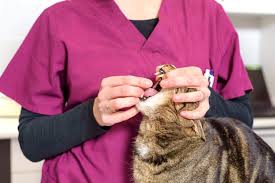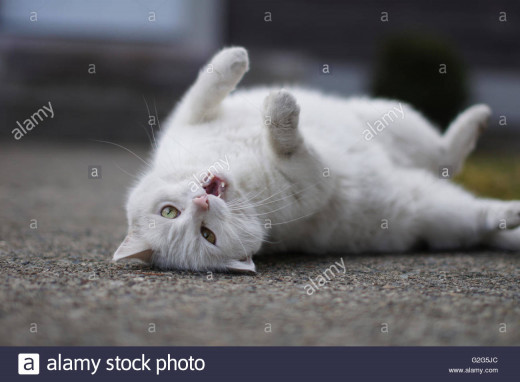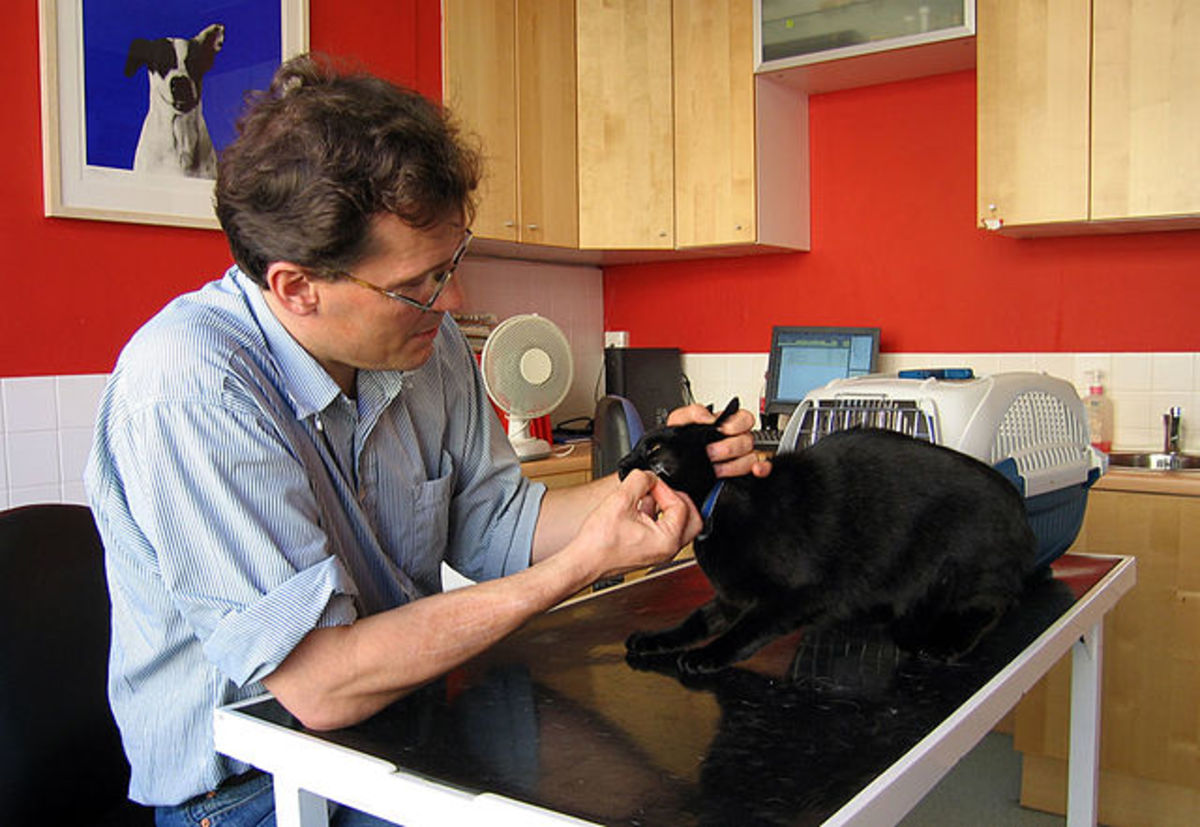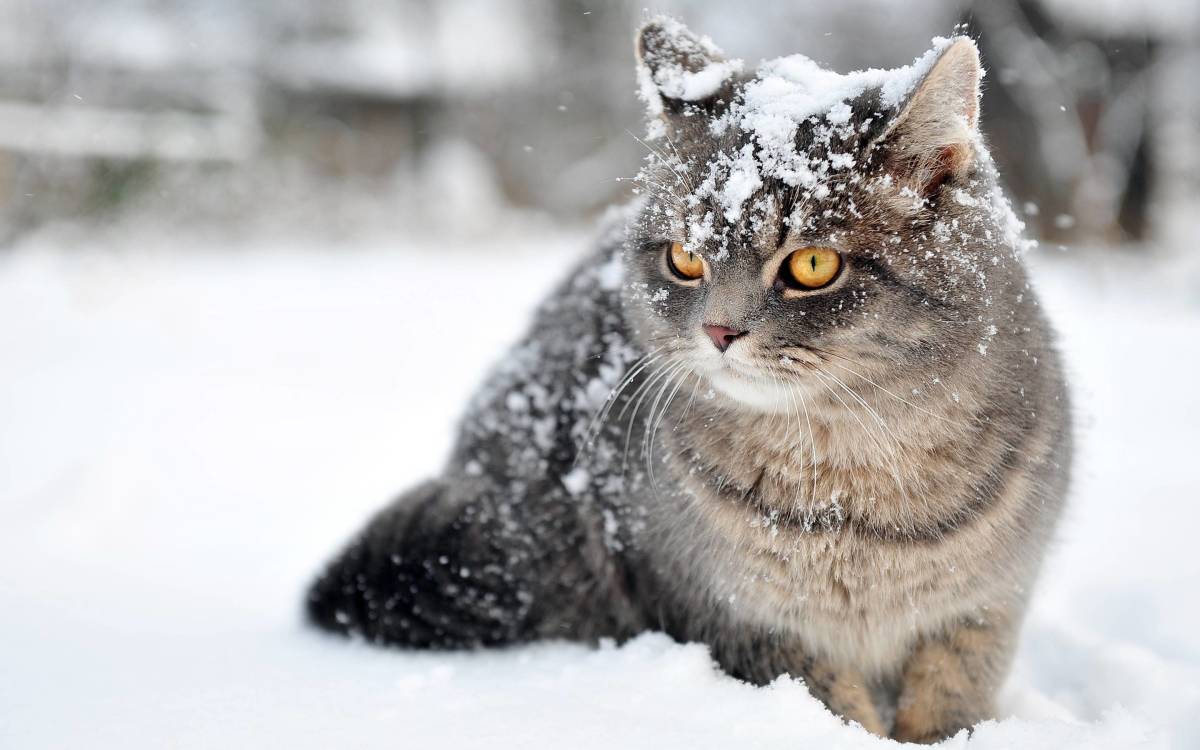Cat Problems and Medications

Cat problems have always been present when administering medications. Cats, unlike most other domestic animals, appear to be unusually sensitive to drugs and medications. This applies to drugs used by the veterinarian and those obtained by the cat owner from other sources. It has been suggested that the cat's liver metabolizes drugs at a slower rate than other animals, and this tends to develop toxic reactions. Many drugs and medications that are safe for people are not safe in cats, even if used according to the manufacturer's recommendations. Since the margin of safety is often quite small, the body weight of the cat becomes an important consideration.
When your veterinarian prescribes a medication, they will be very specific as to the amount and frequency of administering it. These instructions should be very closely observed.
Anesthetics are drugs used to block pain. They can be administered as a local anesthetic, on the surface of the body or as a general anesthetic, by injection or inhalation. The dose of an anesthetic is determined by weighing the cat. Because cats are unusually sensitive to Pentathol, veterinarians usually administer it in sequential small doses rather than giving it all in a single injection.
Cat problems with their health can make general anesthesia risky. The removal of an anesthetic agent is done by the lungs, liver or kidneys, and any history of lung, liver or kidney disease should be discussed beforehand with your vet. It is also very important that your cat not eat or drink anything 12 hours prior to surgery due to a risk of asphyxiation caused by vomitting.
Analgesics are drugs used to relieve pain. All classes of pain-killers should be used very cautiously when given to your cat.
Demerol,morphine, codeine and other narcotics are very unpredictable in cats and cannot be purchased without a prescription. Morphine, in a dose appropriate for a small dog, produces apprehension, excitability and drooling in the cat. If even this minimum dose is exceeded a cat can convulse and die.
Aspirin, the safest analgesic for home veterinary care in a dog, is especially toxic in a cat. One aspirin tablet a day for 3 or 4 days is sufficient to cause salivation, dehydration, vomiting and a staggering gait. The bone marrow and liver can show signs of toxicity and gastrointestinal bleeding is a frequent complication. Aspirin should be given only under veterinary direction. The recommended daily dose for cats is 3 to 10 mg. per pound body weight.
Tylenol is another analgesic which might be inappropriately administered to an ailing cat. A cat given 2 tylenol tablets a day could develop anemia and signs of liver failure.
Butazolidin might be safe in horses and dogs but when given to a cat it can cause toxicity much like that in aspirin and tylenol. It can also cause kidney failure.
Common Household Drugs for Home Veterinary Use
( for the average adult sized cat)
Antacids (Maalox, Mylanta): 1 teaspoon every 4 hours for 2 or 3 doses
Charcoal (Activated): Mix 1 teaspoon in an ounce of water. Give once
Cheracol-D (Cough Syrup): 1/4 teaspoon every 4 hours
Dramamine: 12.5 mg 1 hour before travelling
Glauber's Salt (Sodium Sulfate): 1 teaspoonful
Hydrogen Peroxide (3%): By mouth - 1 teaspoon every 10 minutes for 3 doses or until the cat vomits. For topical application to wounds: Dilute 1 part to 2 parts of water
Kaopectate (for diarrhea)*: 1 teaspoon per 5 lbs. body weight every 4 hours
Metamucil: 1 capsule or 1./2 teaspoon of powder mixed into the cat's food once a day
Milk of Magnesia (Unflavored): 1 teaspoon per 5 lbs body weight. Give once or as directed
Mineral Oil: 1 teaspoon mixed into the cat's food once or twice a week
Panalog (ear drops and ointment): As directed
Pepto-Bismol: 1/2 teaspoon every 4 hours
Petroleum Jelly (Not carbolated): 1/2 to 1 teaspoon once or twice a week
How to Give Medications
Pills (Capsules and tablets)
Unless the cat is very cooperative, he should be wrapped in a towel and held by an assistant. Open the mouth, and place the pill over the back of his tongue in the midline or drop the pill deep into the open mouth. Close his mouth quickly. Hold it shut, while stroking his throat, or tap him briskly under the chin. This stimulates the swallowing reflex. If he licks his nose, he has probably swallowed the pill.
Avoid breaking up pills for two reasons. First, they have an unpleasant taste and may not be tolerated. In addition, some pills have a protective coating, which is important for delayed release in the intestine.
Medications, specifically intended to be given as powders can be added to the cat's food. If the medication has an unpleasant taste it can be disguised by adding brewers yeast, cheese or strong fish oil (ex: tuna )
Liquids
Liquid preparations can be administered into a pouch between the molar teeth and the cheek. It might be easiest to use a medicine dropper. Tilt his chin up 45 degrees and place the neck of the bottle or tip of the eye dropper into his cheek pouch. Seal his lips around it with your fingers and administer the liquid. When the liquid reaches the back of his mouth the cat will automatically swallow.
injections
If it becomes necessary to give your cat injections, it is recommended to have your vet thoroughly explain and illustrate the procedure. It is also recommended to have an assistant hold the cat. Some injections are given under the skin (subcutaneous) and others into the muscle.
Draw the medicine up into the syringe and point the needle towards the ceiling while pressing the plunger to expel any air.When selecting a sit, swab the skin with a piece of cotton soaked in alcohol.
The loose skin in the back of the neck or shoulder is a good place for a subcutaneous injection. Grasp a fold of skin to form a ridge.Firmly push the point of the needle through the skin into the subcutaneous fat in a direction somewhat parallel to the surface of the skin. Before any injection is given, always pull back on the plunger to look for blood. If blood appears withdraw the syringe and repeat the procedure. Blood suggests that you might have hit a vessel and some medicines could cause death if injected into a vessel. In the absence of blood push in the plunger. Withdraw the needle and rub the skin for a few seconds to disperse the medicine.
Intramuscular injections are given in the muscle of the outside of the thigh behind the femur, half-way between the knee joint and the hip. Injections into vessels, nerves and joints can be avoided by giving the shot in the described location. As always, withdraw the plunger and check for blood in the syringe before administering the injection.
Cat problems and the medications used for these problems should always be carefully researched and discussed with a veterinarian, before a decision is made. A cat is a very fragile and sensitive individual and there is no breathing room available when dealing with drugs and medications.
References: The Cat Owner's Home Veterinary Handbook by Delbert G. Carlson, D. V. M. and James M. Giffin, M.D. - First Edition
- Cat Eye Problems - Signs to Be Aware Of
Cat Eye Problems should be extremely important to the cat owner. Cat's eyes have special characteristics that set them apart from other animals. Here we help categorize and explain the most common of these.
We Finished the Clavamox and Baytril










